What is Good Drinking Water pH? Find Out now
Share
Discover what is good drinking water pH, its impact on health and taste, ideal ranges, and tips for adjusting and monitoring pH levels at home effectively.

Water pH plays a crucial role in our health and hydration. It affects how water tastes, how it interacts with our body, and even its ability to clean and nourish. So, what is pH? In simple terms, pH measures how acidic or alkaline water is. This scale ranges from 0 - 14, with 7 being neutral. Below 7, water is acidic. Above 7, it's alkaline.
When we talk about drinking water, pH matters a lot. It can influence the water's taste and, more importantly, our health. The proper pH level in drinking water can ensure it's safe and beneficial for our body's needs. Let's dive into what makes good drinking water pH and why it's essential.
The Science of pH

Understanding the pH scale is like learning a new language—the language of water. This scale, which ranges from 0 to 14, tells us if water is acidic (below 7), neutral (exactly 7), or alkaline (above 7). Each point on the scale indicates a tenfold change in acidity or alkalinity. For instance, water with a pH of 6 is ten times more acidic than water at 7.
Measuring pH isn't just for scientists. It's something water quality experts do to ensure our drinking water is just right. They use special tools, like pH meters or litmus paper, to determine where water lands on the pH scale.
Why does this matter? Because the pH level of water can affect everything from its taste to how well it supports our body's natural functions. It can even influence how effectively water carries minerals and nutrients. So, knowing the pH of your drinking water isn't just interesting science—it's key to understanding its quality and impact on health.
Health Implications of Water pH

Water pH isn't just a number. It has real effects on our health. Let's break down what happens with different pH levels in water.
Acidic Water and Health
Drinking water with a low pH, meaning it's acidic, can be a concern. Acidic water may corrode pipes, leading to metals like lead or copper leaching into your water supply. This isn't just bad for your plumbing—it can affect your health. Consuming high levels of these metals can lead to serious health issues.
Alkaline Water: Pros and Cons
On the flip side, alkaline water, with its high pH, is often touted for health benefits. Some say it can help neutralize acid in the bloodstream, improving metabolism and energy. However, it's not all clear-cut. Drinking too much alkaline water might upset the body's natural pH balance, potentially leading to digestive issues or affecting how well your body absorbs nutrients.
Water pH and Body Balance
Our bodies have a slightly alkaline pH level. Drinking water that's close to neutral helps support this balance. It's like giving your body the right fuel—it can help everything run smoothly, from digestion to detoxification.
In essence, the pH of the water we drink can influence our overall health in several ways. It's not just about quenching thirst; it's about supporting our body's natural balance and function.
Ideal pH Range for Drinking Water
Finding the sweet spot for drinking water's pH isn't just guesswork. It's guided by science and health standards. Authorities like the Environmental Protection Agency (EPA) weigh in on this, aiming to keep our water safe and healthy.
What the Experts Say
The EPA suggests the ideal pH for drinking water is between 6.5 and 8.5. This range is considered safe and palatable, meaning it tastes good too.
The Optimal pH Balance
So, why this range? Water with a pH between 6.5 and 8.5 strikes a balance. It's mild enough to be gentle on our digestive system and support our body's pH balance. Yet, it can also minimize corrosion in pipes, which can introduce harmful metals into our water.
Moreover, water within this pH range tends to taste better. Ever notice a slightly bitter or metallic taste in water? That can happen when the pH is off. Staying within the ideal range means the water is more likely to taste clean and refreshing.
In short, the ideal pH range for drinking water serves a dual purpose: it safeguards our health while ensuring the water is pleasant to drink. By adhering to these guidelines, water providers help ensure that what comes out of our tap is safe and enjoyable to consume.
Factors Influencing Water pH
The pH of drinking water isn't set in stone. It can vary, influenced by both the natural world and human activities.
Natural Factors
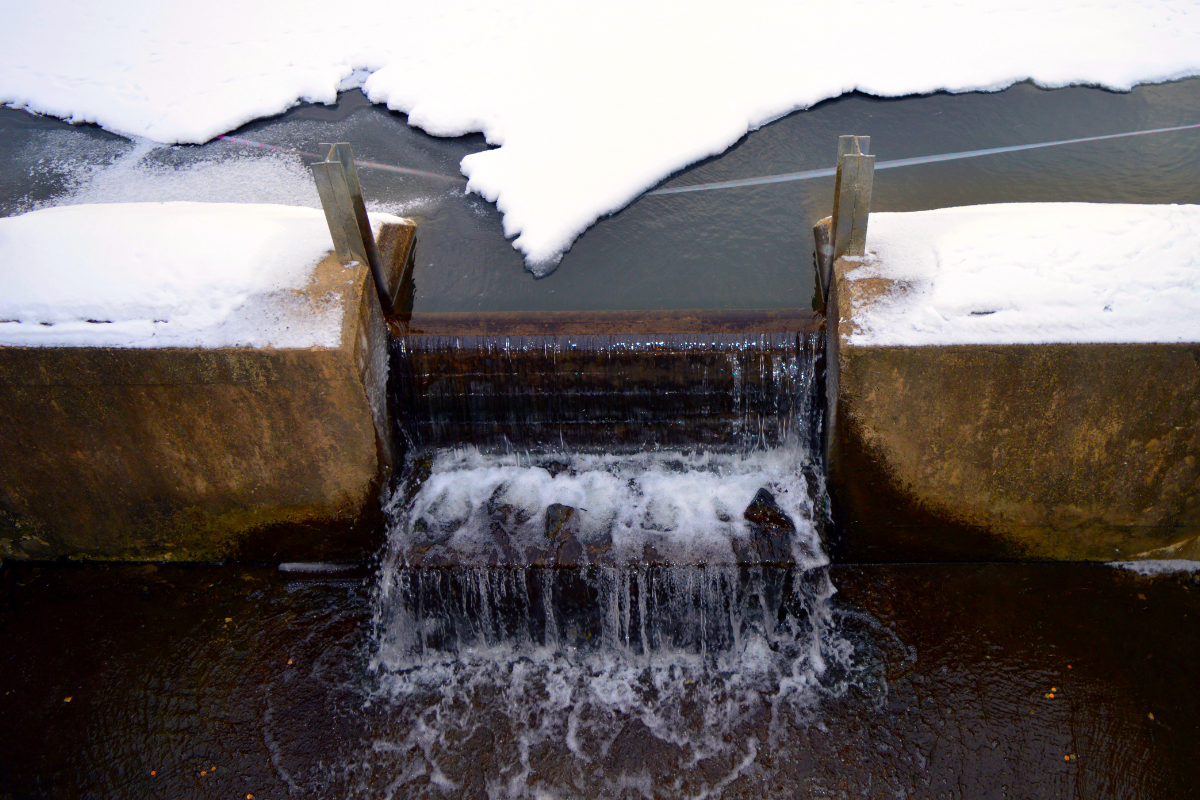
Geography
The land your water travels through plays a big role. Water picks up minerals and compounds from soil and rocks, which can either raise or lower its pH. For example, water moving through limestone (which contains calcium carbonate) tends to be more alkaline.
Seasonal Changes
Seasons also leave their mark. Rainfall patterns, snowmelt, and even temperature can affect water pH. More rain might mean more acidic water, as rainwater absorbs CO2 from the air, forming a weak acid.
Human-Made Factors
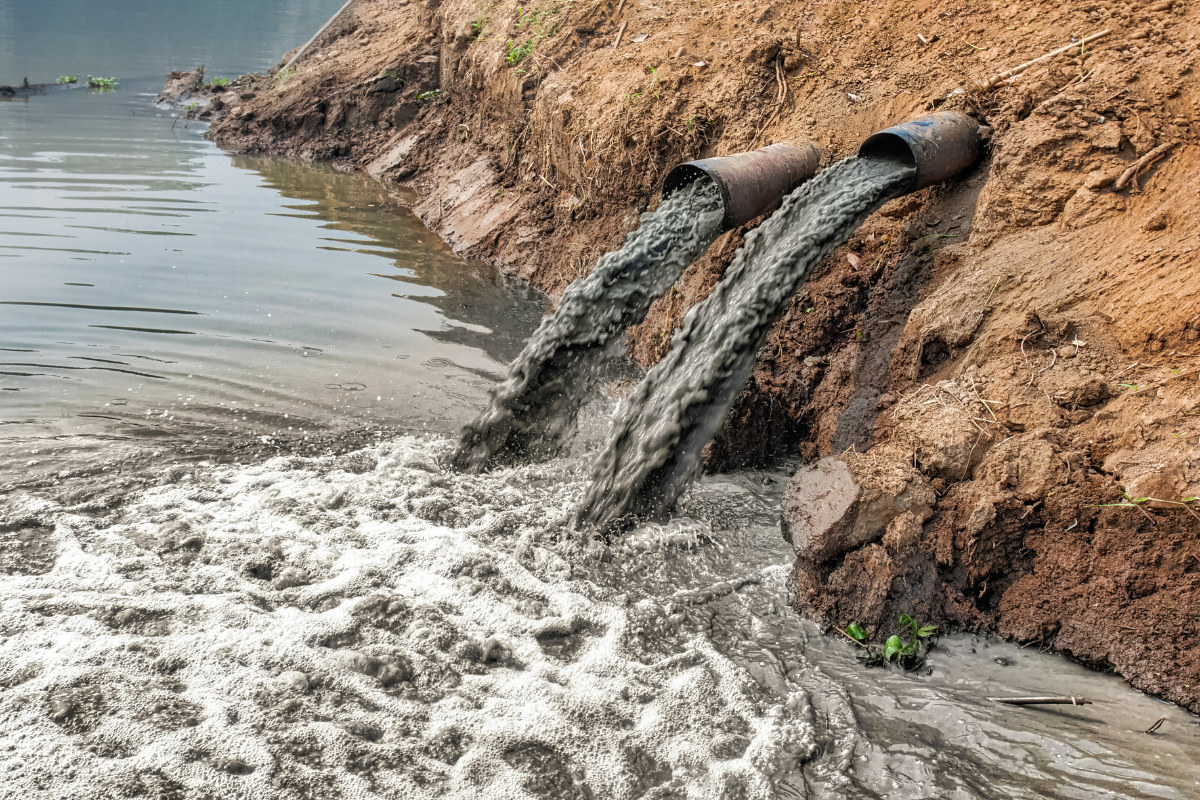
Pollution
Industrial emissions, agricultural runoff, and even urban wastewater can introduce substances into water sources that significantly alter pH. Acids from rain, farming chemicals, and city waste can make water more acidic.
Water Treatment Processes
Conversely, water treatment plants work hard to correct these variations. They add chemicals to neutralize acidity or alkalinity, aiming to bring water within the safe and palatable pH range. This careful balancing act ensures that the water reaching our homes meets health standards.
Both natural and human-made factors mean that water's pH can be a moving target, requiring constant monitoring and adjustment. It's a testament to the efforts to ensure our drinking water supports our health and well-being.
Adjusting Water pH
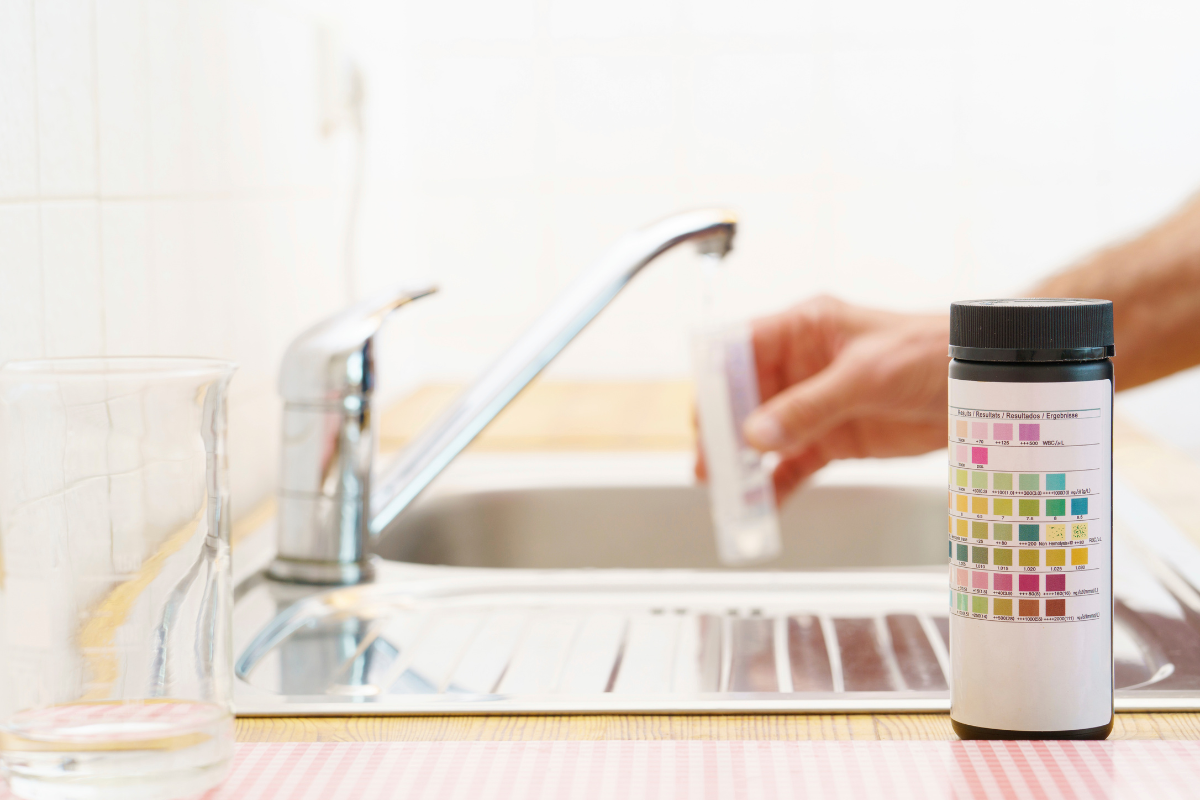
Sometimes, the water that reaches us isn't quite at the ideal pH. But don't worry—there are ways to adjust it, whether it needs a nudge up or down the pH scale. Let's explore how we can bring water back into balance.
Increasing Water pH
Alkaline Filters
These filters add minerals to the water, nudging its pH higher. They're a go-to for making water more alkaline, which can be especially helpful if your water is naturally acidic.
Water Ionizers
Ionizers electrify the water, separating it into acidic and alkaline streams. The alkaline water is what you drink, and it's higher in pH. It's a tech-savvy way to get your water just right.
Additives
Simple additives, like baking soda, can raise water's pH. It's a straightforward method that adds alkalinity to water, making it less acidic.
Decreasing Water pH
Reverse Osmosis
This filtration removes minerals and impurities, often lowering the water's pH. It's effective for dealing with overly alkaline water, making it closer to neutral.
Water Distillers
Distillation purifies water through evaporation and condensation. This process can also remove elements that make water alkaline, reducing its pH.
Acidifiers
Just as you can add substances to make water more alkaline, you can also add acidifiers, like citrus juice, to reduce the pH. It's a simple fix for slightly alkaline water.
Adjusting the pH of your drinking water can make it healthier and more enjoyable. Whether using advanced technology or simple household items, it's all about finding the best balance for you.
pH Testing and Monitoring at Home
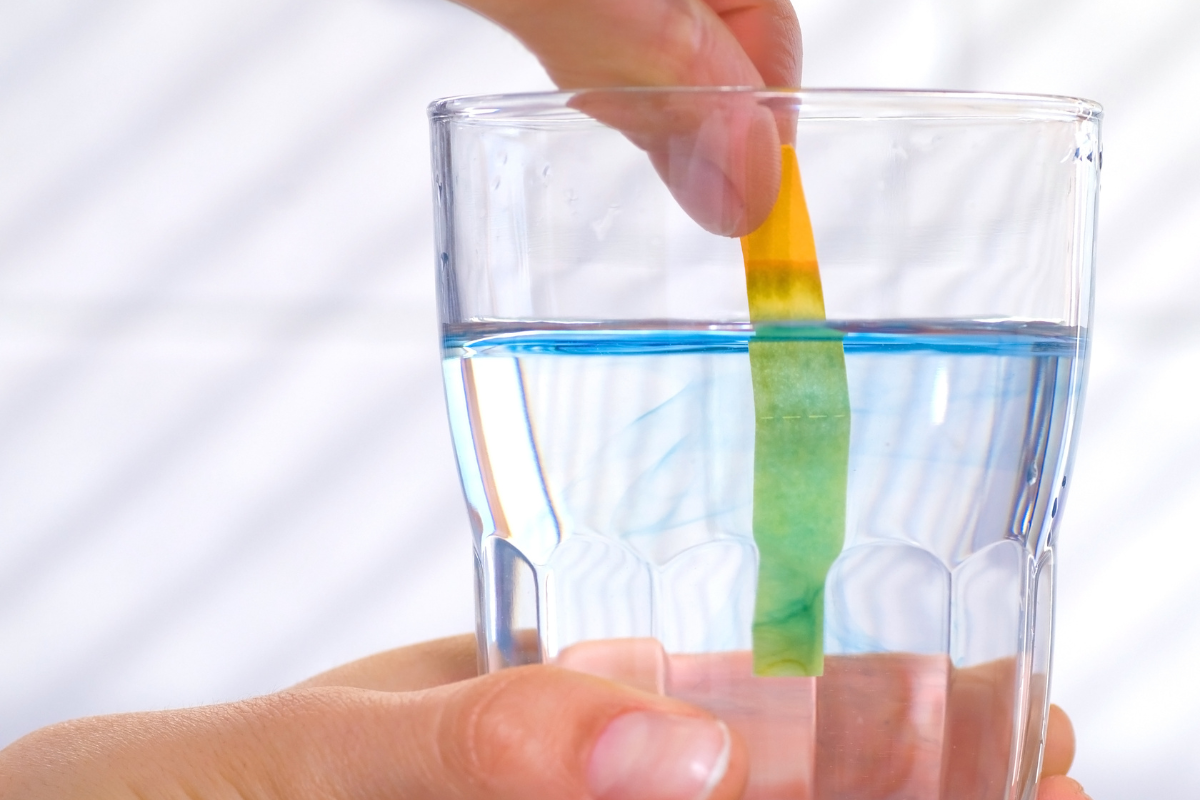
Keeping an eye on your drinking water's pH is easier than you think. With the right tools, you can become a home-based water quality expert in no time. Let's dive into the methods you can use to test water pH and how to do it step by step.
pH Testing Methods
Strips
These are small paper strips that change color when dipped in water. The color indicates the water's pH level. They're simple, quick, and cost-effective.
Digital Meters
For a more high-tech approach, digital pH meters give you a precise reading. Just turn it on, dip the probe in your water, and get an instant pH measurement.
Color-Changing Solutions
These solutions change color when added to a water sample, similar to the strips. The resulting color tells you the water's pH. It's a visually engaging way to test.
Step-by-Step Guide to Testing Water pH
- Choose Your Method: Decide whether you'll use strips, a digital meter, or a color-changing solution.
- Collect a Water Sample: Fill a clean glass with water from your tap.
- Test the Water:
- For strips, dip the strip into the water for a few seconds, then compare the color change to the chart provided.
- For digital meters, insert the probe into the water and wait for the reading to stabilize.
- Add a few drops to your water sample for color-changing solutions and observe the color change.
- Read the Results: Match the color (for strips and solutions) or read the digital display (for meters) to determine the pH level.
- Compare to Ideal pH Levels: Remember, you're aiming for a pH between 6.5 and 8.5 for drinking water.
- Adjust if Necessary: If your water is outside the ideal range, consider using one of the methods discussed earlier to adjust its pH.
Testing your drinking water's pH can be a fun and informative way to ensure you get the best quality water. Plus, it gives you the peace of mind that you're taking a proactive step towards healthier hydration.
Bottled Water and pH

Many bottled water brands market themselves based on purity and mineral content, but pH levels vary widely. Some brands focus on offering alkaline water with a pH above 7, claiming health benefits. Others are closer to neutral, mirroring the natural composition of spring water. By checking the label or the brand's website, you can often find out the pH level of your favorite bottled water.
Bottled Water vs. Tap Water: pH balance
Tap water, as we've learned, typically has a pH between 6.5 and 8.5, adhering to guidelines set by environmental authorities. Bottled water, however, can fall anywhere on the pH scale. Some brands offer more acidic water, potentially down to a pH of around 5. In contrast, alkaline water brands might reach a pH of 9 or higher.
The choice between bottled and tap water isn't just about taste or convenience; it's also about the pH level and how it fits your health goals and preferences. For those looking to maintain a specific dietary pH balance, this distinction could be crucial.
Considerations
- Label Reading: Always check the pH level on bottled water labels if it concerns you. Not all brands disclose this information readily, but many do.
- Environmental Impact: Beyond pH, consider the ecological implications of bottled vs. tap water. Bottled water has a higher environmental footprint due to packaging and transportation.
- Cost vs. Benefit: Tap water is significantly less expensive than bottled water. If your tap water is within the ideal pH range, it might be the smarter, more economical, and environmental choice.
Understanding the pH levels of bottled water and how they compare to tap water allows you to make informed decisions about what you drink. Knowing the pH can help you better align your hydration choices with your health and wellness goals, whether you prefer bottled or tap.
Alkaline Water: Hype vs. Health Benefits
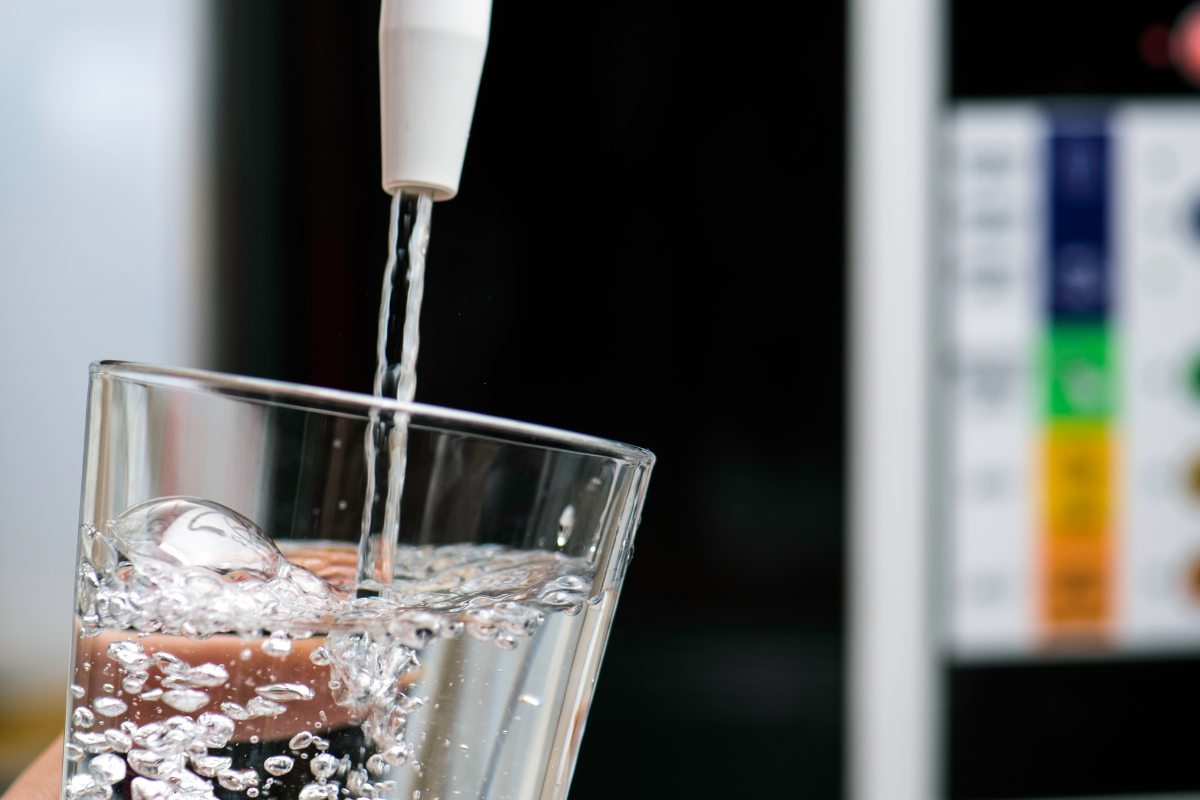
Alkaline water has been a buzzword in wellness circles, touted for its supposed superior health benefits over neutral or acidic water. But what does the science say?
Examining the Claims
Proponents of alkaline water argue it can help neutralize acid in the bloodstream, leading to more energy, improved metabolism, and a reduced risk of certain diseases. Some also claim it can provide superior hydration compared to regular water.
What Science Says
Research on the health benefits of alkaline water is mixed. Some studies suggest potential benefits, like improved hydration for athletes. Still, these benefits are often modest and not universally accepted by the scientific community. On the flip side, drinking too much alkaline water can disrupt the body's natural pH balance, potentially leading to metabolic alkalosis. This condition can cause nausea, vomiting, and muscle twitches.
In short, while there may be some benefits to drinking alkaline water, it's essential to approach the claims with a critical eye and balance them with the body's need for a stable pH level.
Frequently Asked Questions (FAQ)
What are the pH levels in pure drinking water?
Pure drinking water, ideally, has a neutral pH level of 7. However, depending on the source and treatment processes, the pH can slightly vary. Purified water, having been treated to remove contaminants, might have a pH that's close to neutral but can shift slightly due to the purification process.
What is the pH level in Adya Clarity treated water?
Adya Clarity is a water treatment solution that aims to reduce contaminants and improve water quality. The pH level of water treated with Adya Clarity can vary depending on the initial pH of the water before treatment. Generally, Adya Clarity aims to bring water to a more balanced pH level, but for specific results, it's best to test the water after treatment.
Is 9.5 pH water good for you?
Water with a pH of 9.5 is considered alkaline. While some proponents argue that alkaline water can help neutralize acid in the body, scientific evidence supporting these claims is limited. Drinking water with a pH of 9.5 is generally safe, but it's essential to consider personal health issues and consult a healthcare provider if you have specific health concerns.
Is 5.5 pH good for drinking water?
A pH level of 5.5 is on the acidic side of the scale and is generally not considered ideal for drinking water. While slightly acidic water is not necessarily harmful for most people, long-term consumption of water with a low pH can potentially affect dental health and the body's mineral balance. It's advisable to aim for a more neutral pH in drinking water.
Is 6.2 pH water good to drink?
Water with a pH of 6.2 is slightly acidic but still within a range that's generally considered safe for drinking. While not perfectly neutral, water at this pH level is unlikely to pose significant health risks for most individuals. However, for optimal hydration and health, a pH closer to neutral is preferred.
Conclusion
The journey through the world of water pH is more than a scientific curiosity—it's a crucial part of our health and well-being. From understanding the basics of pH to recognizing how different water sources and types can impact our health, we've covered essential ground.
Now, it's your turn. Dive into assessing your drinking water, armed with knowledge and curiosity. Test its pH, explore its mineral content, and consider how it fits your health goals and lifestyle. Making informed choices about the water you drink is an empowering step toward maintaining your health and enhancing your quality of life. Remember, the best hydration strategy is tailored to you, so take this information and use it to make choices that serve your well-being best.
